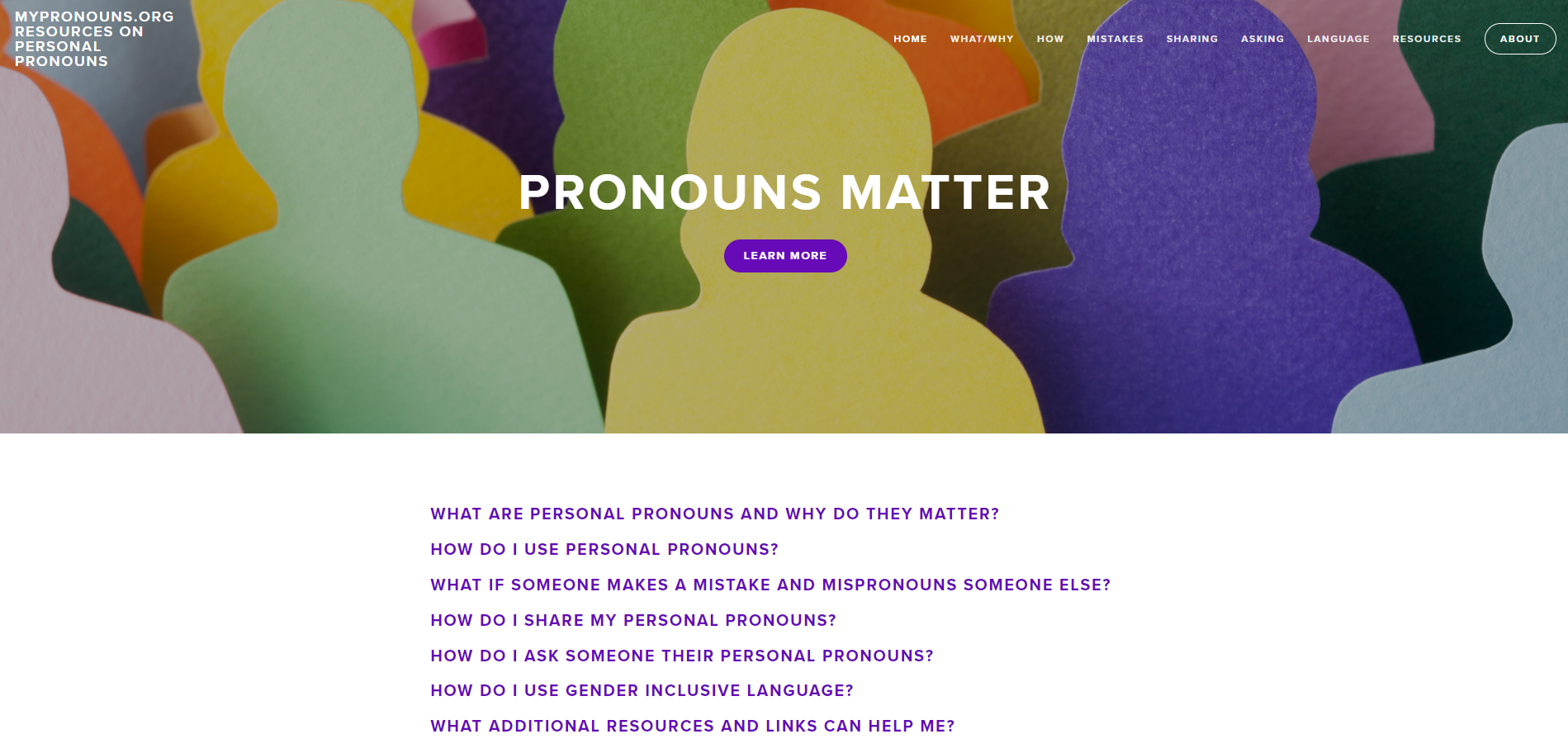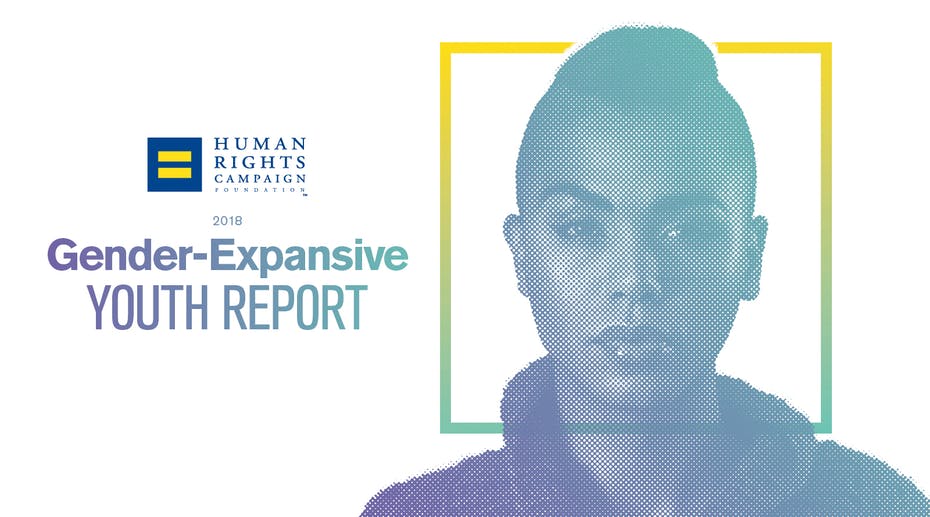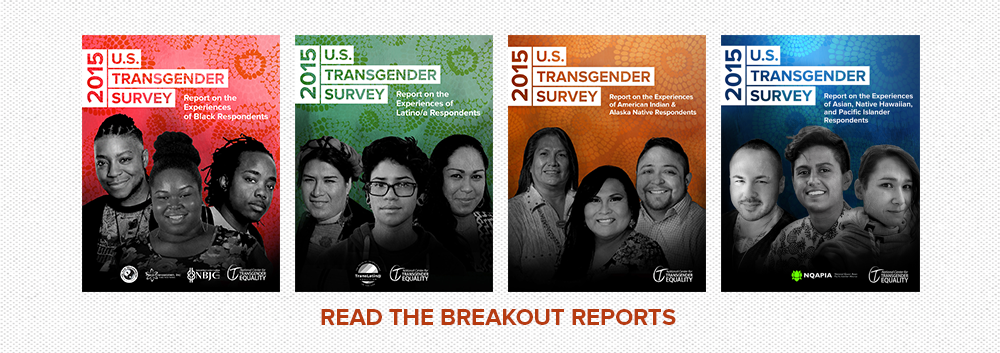Beyond Inclusion: Pronoun Use for Health and Well-Being
Everyone is assigned a gender at birth. A doctor checks each baby over, and, primarily based on external features, selects one of two gender options that seems to fit best. This single decision—not even our own—informs almost every aspect of the rest of our lives, including how others refer to us, how we are socialized, which subjects in school we are expected to excel at, who we are expected to marry, how we are expected to look, and ultimately, what our health outcomes are expected to be.
For Transgender and Nonbinary (TGNB) people whose gender, name, and pronouns assigned at birth aren’t reflective of who they really are, this single moment sparks a life-long battle for inclusion, respect, and belonging.
In recent years, pronouns have come to the forefront of this struggle, partially because they offer an ‘in’ for eager allies to join the fight. From email signatures and social media profiles to health forms, Zoom displays, and resumes, pronouns and preferred name fields are now popping up everywhere. Often framed as an issue of inclusiveness and respect toward members of the LGBTQ+ community, pronoun sharing has become a staple of allyship and a growing measure of diversity.
But these efforts and the ensuing backlash has partially co-opted pronouns’ most important, powerful role: pronouns save lives.
Physical & Mental Health Equity
Transgender and Nonbinary people frequently grapple with a life-threatening combination of increased mental health struggles (81.7% of Transgender people have seriously thought about suicide) and difficulty accessing appropriate medical care due to under-educated physicians, insurance coverage complications, and discrimination. These inequities are being met with tireless efforts from the LGBTQ+ community and allies to improve gender-expansive care.
Proper pronoun and chosen name use is one critical piece that has been proven to directly benefit the health and well-being of TGNB people. This is especially pronounced for gender-expansive youth who often have less autonomy and fewer resources than adults.
According to a recent study on pronoun use, TGNB youth whose pronouns were respected by “all or most of the people in the lives attempted suicide at half the rate” of those whose pronouns were not respected. When compared with TGNB youth who aren’t able to use their chosen name and associated pronouns in any context, young people who can safely use their chosen name in all four key contexts (school, home, work and with friends) experience a significant improvement in health outcomes, including:
71% fewer symptoms of severe depression
34% decrease in reported thoughts of suicide
65% decrease in suicidal attempts
How do pronouns improve well-being?
One of the most common misconceptions about proper pronoun use is that it simply creates inclusive spaces for LGBTQ+ community members, which in turn improves mental health and one’s sense of belonging. While those are all important and true aspects of TGNB well-being, they are only part of the picture.
Personal pronoun use is a cornerstone of Transgender and Nonbinary health because it is a foundational building block of gender-affirming medical intervention: transitioning. When a TGNB person is ready to start shifting their external life to match their internal life, this process of transition typically falls into two overarching categories:
Social transition: this often includes a TGNB person “coming out,” sharing their chosen name and correct pronouns, building a social support system (peers, providers and loved ones), voice training, choosing gender-affirming clothing, makeup, haircuts and/or wigs, and using gender-affirming devices such as gaff underwear, chest binders and/or packing equipment
Medical transition: this often includes hormone therapy to increase or decrease characteristics typically associated with assigned genders, as well as gender-affirming surgery
Both social transition and medical transition are valid, effective medical interventions for gender dysphoria and associated feelings of depression, anxiety, dissociation, and suicidality that TGNB people frequently experience prior to coming out. Data show that even the initial steps of social transition, such as pronoun and chosen name use, are life-saving for Transgender and Nonbinary people.
Gender Expansive Therapist, Cheryl Enstad, MSW, LICSW, shares that the value of social transition is especially impactful for TGNB children and adolescents:
“Using a child’s correct pronouns and name is the medical intervention for gender dysphoria. It is often the only first step available and sometimes the only step available for a long time.”
This is also true for people with financial limitations, limited access to trans-competent care, and trauma histories that may deter pursuing medical transition.
Allyship for Health, Not Just Inclusion
For Transgender and Nonbinary people--especially youth and those with limited access to care--using correct personal pronouns and chosen names can be a matter of life and death. Allies can directly participate in improving TGNB individuals' health outcomes by using correct pronouns, chosen names, and gender-affirming language. Even actions that seem small and easy to take can be life-saving.
Start with:
- Sharing your own personal pronouns on name tags, email signatures, Zoom displays, social media profiles, and bios, as well as when introducing yourself speaking in front of a group. Say "My pronouns are ___" instead of "I prefer ___ pronouns."
- Being able to articulate why you share your pronouns and why respecting pronouns is important for inclusion, equity, well-being, and health
- Encouraging (but not requiring) others to share their pronouns as well
- Asking for a person's pronouns if you don't know them, and simply apologizing and correcting yourself if you make a mistake
- Practicing using gender-neutral and neopronouns in everyday speech
- Following and supporting Transgender and Nonbinary people--especially TGNB Black, Indigenous, and People of Color--in the media you consume, including social media, news, books, music, art, and entertainment
- Raising up and centering TGNB voices and perspectives in both your personal life and place(s) of work
Browse the resources below for more ways to provide allyship to the TGNB community.
by: Serin Bond-Yancey (they/any). Serin is a Disabled, queer, nonbinary, multiply-neurodivergent, antiracist accomplice. Serin serves as the Executive Director of the Transgender Health and Wellness Center of Washington (Trans-Wa), and works with a diverse portfolio ofnonprofits as an Impact, Equity, and Accessibility Consultant.
TGNB Allyship Resources:
Beyond Allyship: Leveraging Activism Tools to Improve Transgender and Nonbinary Health
Story
-
 Original
Original
Brought to you by Community Commons
Published on 01/26/2022
Transgender & Nonbinary Resources:
Neurodiversity and Gender-Diverse Youth: An Affirming Approach to Care 2020
Resource - Guide/handbook
Video: For Trans People, It’s Difficult and Costly to Update an ID. But It Can Also Be Dangerous Not To.
Story - Video
Brought to you by ProPublica
LGBTQ+ Resources:
LGBTQ + and Autism Spectrum Disorder: Experiences and Challenges
Resource - Journal Article
Brought to you by Taylor & Francis
Equity & Youth Mental Health Resources:
College Student Mental Health Equity during the COVID-19 Pandemic
Story
-
 Original
Original
Brought to you by Community Commons
To Improve Student Health and Well-Being Focus on Mental Health
Story
-
 Original
Original
Brought to you by Community Commons
Transforming Systems for Wellbeing and Equity
Resource - Guide/handbook
Brought to you by Community Commons
Building a Culture for Community Resilience: Safe Spaces and Small Acts to Increase Youth Mattering
Story - Written
Published on 05/06/2021
Related Topics




























